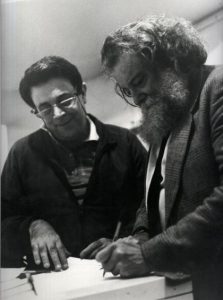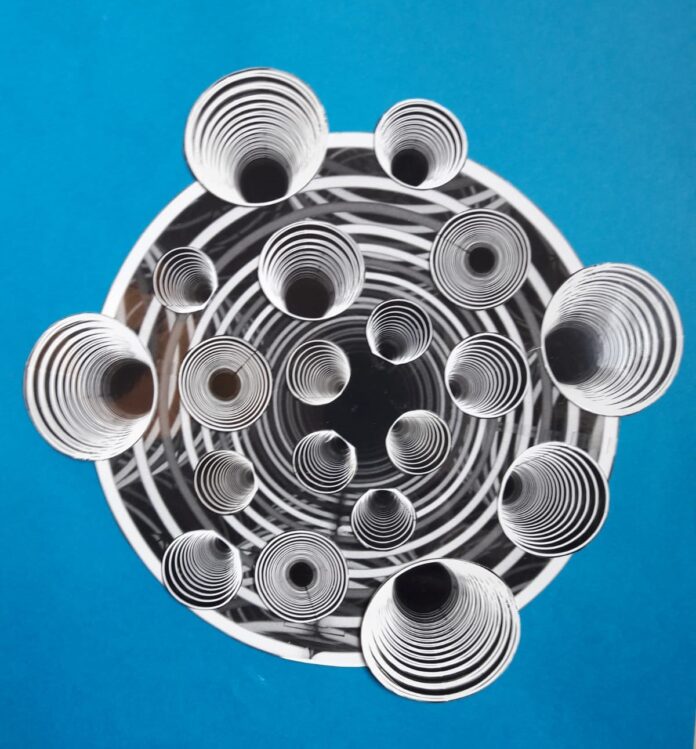
He was born in Syracuse in 1934 and lives in Milan where he taught at Accademia di Brera. In the 70s, after having experienced a two-dimensional iconography, he focused on a multidirectional modularity based on light and mirrors as immaterial and spectacular protagonists.
Hence his Ludoscopes, three-dimensional works, hyperspaces-light beyond the border of the real and the illusory. Scholars of art and science paid attention to them. Bruno Munari underlined the playful aspect of them.
He also created large works reporting consumerism, for instance the 1972 Megalopolis.
In the 1980s he developed the first design interventions by inserting his luminous chasms into historic architecture and environments.
Over the time, he participated in the Salon Grands et Jeunes d’aujourd’hui in Paris; the IX and XIII Quadrennials in Rome; also: the Galleria San Fedele (Milan), Palazzo dei Diamanti (Ferrara), the ZKM (Karlsruhe), athe Neue Galerie (Graz), the MART in Rovereto, at the National Gallery and at MACRO (Rome), Museum Ritter (Waldenbuch), the Academy of Fine Arts of Brera (Milan), MACBA (Buenos Aires), MACLA (La Plata), GR Gallery (New York), MUO ( Zagreb), the Instituto Tomie Ohtake (San Paolo in Brazil), the Centro Cultural Oscar Niemeyer (Brasilia), the Carlos Cruz Diez Foundation (Panama), the MACA Museum of Contemporary Art (Acri, Cosenza) and recently the Ettore Fico Museum (Turin).
His works are part of the following institutions: Museo del Novecento, the Gallerie d’Italia, the Civic Collections of Prints Achille Bertarelli at the Castello Sforzesco, the Library of the Academy of Fine Arts of Brera, the MAPP (Milan); the MAGA (Gallarate); the VAF-Stiftung of MART in Trento and Rovereto; The National Gallery and the Farnesina Collection, contemporary art collection of the Ministry of Foreign Affairs (Rome); the Palazzo dei Diamanti (Ferrara); the MAGI Museum (Pieve di Cento, Bologna); MACTE (Termoli); the Museo Civico Umbro Apollonio (San Martino di Lupari, Padua); the Civic Museum of Contemporary Art (Gibellina, Trapani); the Museum (Bagheria, Palermo); the Chiaramontane factories (Agrigento); the Museum Ritter (Waldenbuch) and the Musée des Beaux Arts (Caen).
His works contributed to stage designs, both TV and Thatre. In 2015, the INDA National Institute of Ancient Drama of Syracuse entrusted him with the realization of the Manifesto of the 51st Cycle of Classical Performances. In 2016, the Milano Musica Festival assumed his Ludoscopes to illustrate the Music of the composer Gérard Grisey.








